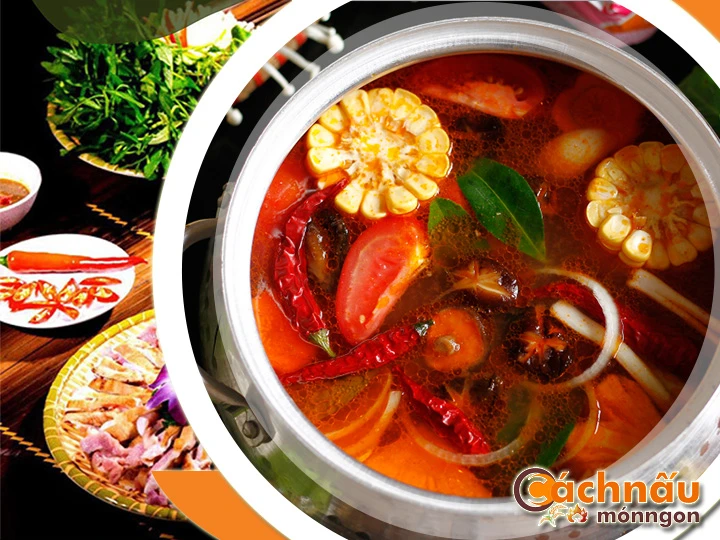Try the Perfect Rabbit Hot Pot Techniques to Enjoy - Lẩu thỏ
Hot pot rabbit, a
flavorful and
heritage-inspired recipe, has been
valued across
diverse culinary traditions for centuries. 
This comprehensive guide explores everything you need to understand about rabbit hot pot, from its ancient origins to present-day styles, dietary perks, and step-by-step instructions for creating the excellent dining option at home. Whether you are a veteran chef or a amateur chef, this guide will encourage and guide you to perfect the skill of rabbit hot pot.
UNVEILING THE CHRONICLES ALONG WITH CUSTOMS CONCERNING {BRAISED RABBIT DISH|HEARTY RABBIT MEAL|RABBIT HOT POT|RABBIT STEW|BUNNY CASSEROLE|RABBIT CUISINE|STEWED RABBIT
Rabbit hot pot stands as a one-of-a-kind and heritage-rich dish with profound cultural roots in many areas. Its appeal stems not only from its flavorful flavor but also from its history and value.
Rabbit hot pot represents a special and historical dish with deep heritage in diverse locales. Its appeal stems not only from its delicious flavor but also from its past and cultural importance.
- Historical Beginnings: Rabbit stew emerged in rural areas where bunnies were a popular, nourishing food source. In historical China, it was a family favorite, particularly during celebrations.
- Becoming a Global Favorite: In Western regions like Spain, rabbit was traditionally used in stews, adapting into modern versions of rabbit stew as the dish became internationally recognized.
2. Rabbit Stew influencing Eastern Heritage.
- Across China: Known as the famous rabbit hot pot, rabbit hot pot is an essential part of Sichuan cuisine, admired for its fiery flavors and frequently prepared for special celebrations.
- Across Korea and Japan: While less common, rabbit hot pot is occasionally enjoyed as a health-focused recipe in the Korean Peninsula, or incorporating elements of Japanese hot pot traditions in Japan, blending with local produce and spices.
- Within Vietnam: Although rabbit hot pot is rarely a daily choice, it is celebrated during noteworthy gatherings or in farming regions where rabbit meat is plentiful. It is often cooked with distinctive spices such as lemongrass, zesty ginger, and spicy chili, paired with fresh vegetables like morning glory, brassica leaves, or water mimosa. This dish is adored for its distinct taste and health benefits, frequently eaten at festive occasions with loved ones.
Trong văn hóa Việt Nam, tuy không phổ biến là món ăn phổ biến ngày qua ngày, nhưng được yêu thích trong những dịp đáng nhớ hoặc ở khu vực nông thôn, nơi thịt thỏ được tìm thấy nhiều. Thường được chế biến với mùi thơm từ sả, gừng tươi, và ớt tươi, kết hợp với rau sạch như rau muống. Món ăn này được yêu thích nhờ mùi vị khác lạ và nhiều giá trị dinh dưỡng, thường trở thành tâm điểm của những bữa ăn cùng người thân.
3. Stewed Rabbit central to Food Traditions in Europe.
- Across France: Commonly made as a savory meal with red wine sauce, seasoning herbs like rosemary, and earthy roots. Rabbit hot pot is a traditional recipe for family reunions.
- Within Italy: The dish known as “Cacciatore”, featuring rabbit simmered with wine and tomatoes, is a inspiration for contemporary rabbit hot pot variations.
MASTERING RABBIT HOT POT: RECIPES AND METHODS
Rabbit hot pot is a versatile dish that lẩu thỏ đúng điệu combines seasonal ingredients, savory broths, and specialized methods to create a rich and satisfying meal. Below are key steps into the core recipes and strategies to excel in rabbit hot pot.
The Fundamental Recipe for Rabbit Hot Pot
* Ingredients:
- 1 whole rabbit (chopped into parts)
- 4 cups of broth (bone broth)
- Vegetables (bok choy)
- Spices and herbs (rosemary)
- Seasonings (soy sauce)
- Optional: noodles for serving
* Cooking Instructions:
- Prepare the Rabbit: Wash and cut the rabbit into pieces. Season with a pinch of salt, black pepper, and a drizzle of soy sauce for half an hour to enrich the flavor.
- Make the Broth: Heat a vessel with a touch of oil. Cook minced garlic and ginger until aromatic. Add your selected stock and bring it to a light boil.
- Simmer the Rabbit: Add the rabbit pieces into the pot and let them cook slowly on gentle heat for around half an hour until soft.
- Incorporate Vegetables: Add your selected vegetables and cook until they are perfectly cooked but still fresh-looking.
- Present: Transfer the hot pot to a portable stove. Serve with dipping sauces and extras like rice or noodles.
Mastering Rabbit Hot Pot Techniques
- Flavor Enhancement:
. Marinate the rabbit with a blend of salt, pepper, and seasonings to intensify its original taste.
. For more depth, use cooking wine or a mix of herbs such as rosemary and thyme.
- Layering Ingredients:
. Start by cooking the rabbit in the broth to release its savory taste.
. Gradually add vegetables based on their required time.
- Cooking Time:
. Avoid letting it dry out the rabbit, as it can lose tenderness.
. Test for doneness by checking if the meat falls off the bone.
- Flavor Enhancements:
. Fine-tune the broth by adding extra herbs as needed.
. Experiment with different flavor profiles, such as creamy European-inspired variations.
Tips for Success
- Choose Freshness: Always choose fresh rabbit meat and seasonal vegetables for the top flavor.
- Balance Flavors: Be attentive of the saltiness in the broth. Try and adjust frequently during cooking.
- Sauce Pairings: Offer a selection of sauces like sesame paste or savory soy mixes to enrich the dining experience.
- Presentation: Use a tabletop cooker or serve the hot pot as the centerpiece to foster interaction.
By mastering these cooking techniques, you can prepare a rabbit hot pot that’s delicious and attractive, making it a star attraction for any meal or dining experience.
